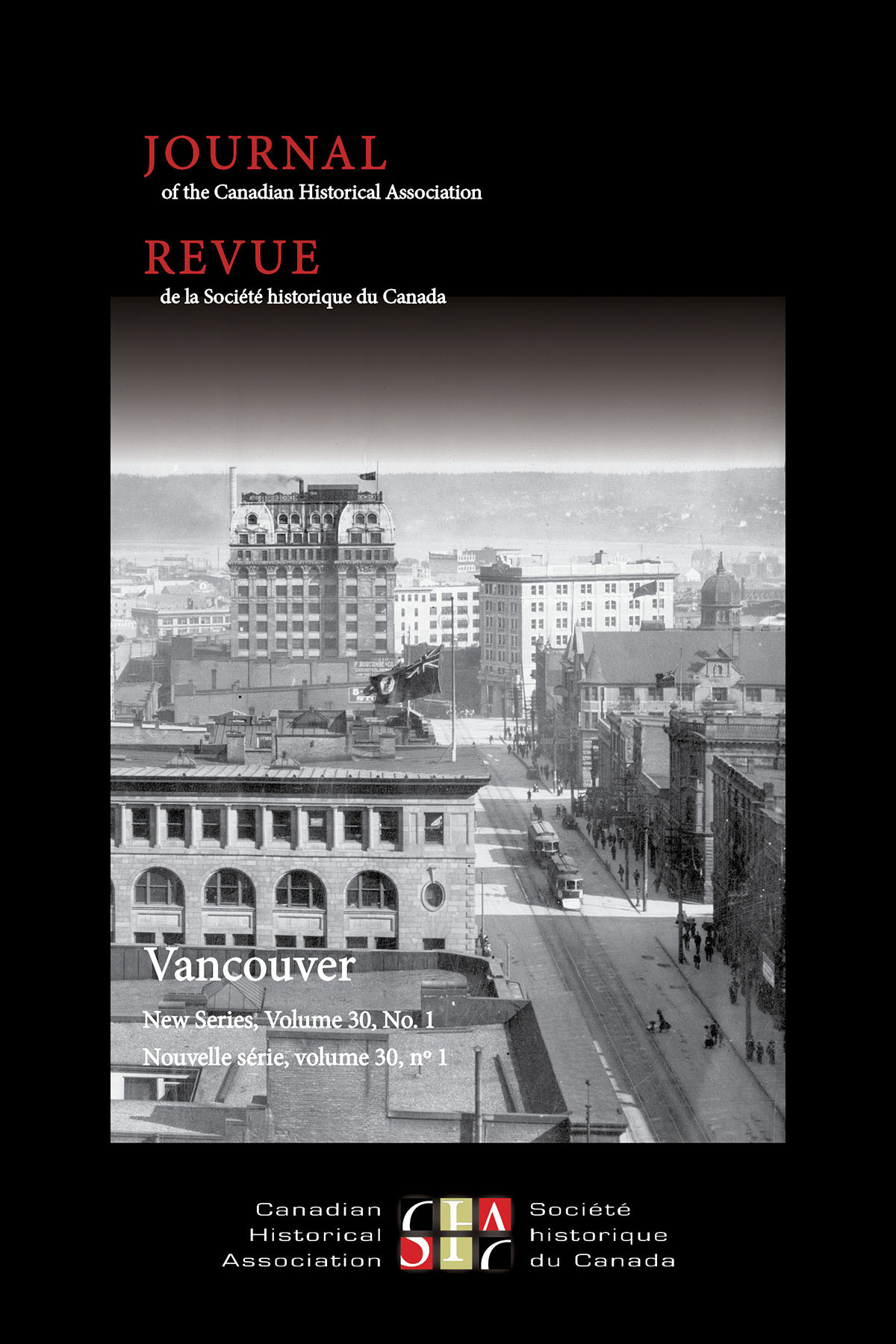Résumés
Abstract
How does history look when we begin with water? Here, I want to address the possibilities of thinking about water, particularly through the its relationship to colonialism, and especially in the watery, geographical centre of North America that we might call the western edge of the Annishinaabeg world, and we also might call the space between modern Winnipeg and the Lake of the Woods. To discuss histories of water here, I will draw on Indigenous Studies, critical colonial history, histories of the environment, and urban space, and the questions prompted by the present of 2019, sitting as it does in the wake of the completion of the Truth and Reconciliation Commission (TRC) in 2015, and the commemoration of the sesquicentennial of the British North America Act (BNA) in 2017. As the Canadian Historical Association/Société Historique du Canada (CHA/SHC) approaches its 100th anniversary in 2022, and as we think and act around the role of scholarly disciplines, including history, in the institutional, social, and intellectual scaffolding of the ongoing project of Canadian colonialism. These are some of the questions that water can lead us to. I will begin by talking about water, history, and settler colonialism, and then turn to histories of water at the meeting of the Red and Assiniboine rivers, and to histories of dispossession in the Lake of the Woods watershed before returning to our colonial present, and the role of histories and historians in that present.

